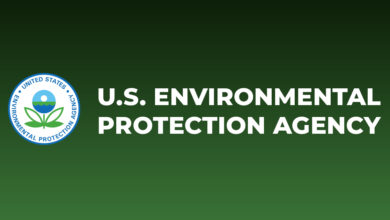A Blueprint for Sustainable Resource Management

The United Nations Environment Programme’s latest Global Resource Outlook 2024 delivers a stark message: the world must urgently transform its resource consumption and production patterns to mitigate the escalating crises of climate change, biodiversity loss, and pollution. This comprehensive report underscores the dire consequences of continuing on our current trajectory and presents actionable pathways to foster a sustainable future.
The Triple Planetary Crisis
According to the Global Resource Outlook 2024, unsustainable resource extraction and usage are primary drivers of the triple planetary crisis. Over 55 percent of global greenhouse gas emissions stem from material extraction and processing, contributing significantly to climate change. Furthermore, resource use is a major factor in biodiversity loss, with agricultural activities and deforestation leading to the destruction of habitats. Pollution from industrial activities and waste exacerbates environmental degradation, affecting both ecosystems and human health.
The report highlights that these impacts are disproportionately felt by poorer communities, exacerbating global inequalities. High-income countries consume resources at six times the rate of low-income countries, amplifying the urgency for equitable and just resource management solutions.
Drivers of Resource Use
The relentless increase in resource use is driven by several key factors: population growth, economic expansion, and urbanization. As the global middle class expands, so does the demand for infrastructure, goods, and services, leading to greater material consumption. The built environment and mobility systems are identified as the primary drivers of rising resource demand, followed closely by food and energy systems.
The report warns that without significant changes, material resource extraction could increase by nearly 60 percent from 2020 levels by 2060, far exceeding what is needed to meet essential human needs sustainably.
Pathways to Sustainability
The Global Resource Outlook 2024 outlines two contrasting scenarios for the future: the Historical Trends scenario and the Sustainability Transition scenario. Under the Historical Trends scenario, continued economic growth leads to significant increases in resource use and environmental impacts, perpetuating the current unsustainable trajectory.
In contrast, the Sustainability Transition scenario presents a more hopeful outlook, demonstrating that it is possible to decouple economic growth from resource use and environmental impacts. This scenario envisions a world where global GDP grows by 3 percent more than predicted, while resource use falls by 30 percent. Greenhouse gas emissions could be reduced by over 80 percent, and economic inequalities could be diminished.
Achieving this transition requires systemic changes and bold policy actions. Key recommendations include institutionalizing resource governance by establishing clear policies and governance structures to manage resource use effectively. Financing sustainable practices by redirecting financial flows to support sustainable resource management is crucial. Promoting sustainable consumption patterns to reduce resource demand is essential, and implementing circular economy principles to enhance resource efficiency and reduce waste is a necessary step.
Collective Effort for a Sustainable Future
The report emphasizes that addressing the triple planetary crisis requires a collective effort from all sectors of society. Policymakers, businesses, and individuals must work together to implement sustainable practices and foster innovations that promote resource efficiency and environmental stewardship.
Communities play a crucial role in this transformation. Grassroots initiatives such as community-led recycling programs, urban gardening projects, and local clean-up campaigns are vital in raising awareness and driving change at the local level. By fostering a culture of sustainability, individuals can contribute to global efforts to manage resources more responsibly.
The report calls for immediate and decisive actions to rebalance humanity’s relationship with the natural world. The window of opportunity to secure a sustainable future is closing, but with concerted efforts, it is possible to achieve a world where both people and the planet thrive.
The Global Resource Outlook 2024 serves as a critical reminder of the urgent need for transformative change in how we use and manage natural resources. By embracing sustainable practices and systemic solutions, we can address the triple planetary crisis and pave the way for a healthier, more equitable world. The time to act is now, and it is up to each of us to play our part in securing a sustainable future for generations to come.
In an era marked by environmental challenges, the Global Resource Outlook 2024 provides a comprehensive roadmap for achieving sustainable resource management. As we move forward, it is essential to prioritize actions that foster a balance between economic growth, environmental health, and social equity. Only through collective effort and unwavering commitment can we hope to transform our world into a place where both humanity and nature can flourish.



